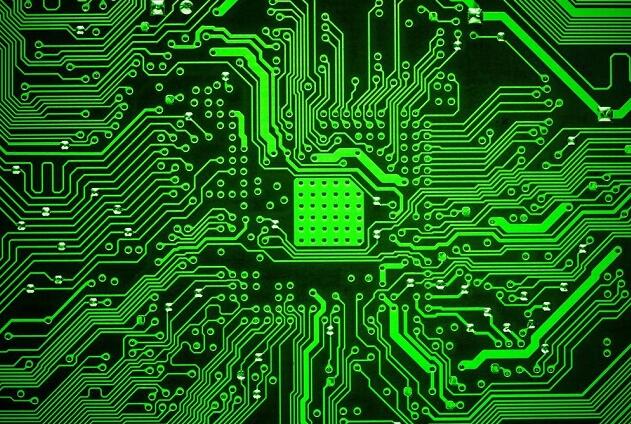1. The birth period of PCB: 1936~ (manufacturing method: additive method)
The author first knew about the "printed board" in 1948. At that time, he was a new employee who had just joined Tokyo Shibaura Electric Co., Ltd. for two years. Under the instruction of the section chief, he began to investigate the "printed board". I went to the American Garrison Library where Japanese people are allowed to read it, and stumbled upon a technical paper titled "Printed Circuit Technology". At that time, there was no photocopier, and the required documents could only be copied with pen. The papers were about 200 pages in total, which described in detail various processes such as smearing method, spraying method, vacuum deposition method, evaporation method, chemical deposition method, coating method, etc. Both are adding conductive material on the surface of the insulating board to form a conductor pattern, which is called the "additive process". The printed boards using this type of production patent were used in radio receivers at the end of 1936.
2. PCB production period: 1950~ (manufacturing method: subtractive method)
One year after the author entered OKI, the communications equipment industry began to pay attention to PCB in 1953. The manufacturing method is to use copper-clad paper-based phenolic resin laminate (PP base material), which is dissolved and removed with chemicals. Copper foil, the remaining copper foil becomes a circuit, which is called "subtractive process". In some sign manufacturing factories, this process is used to try out PCBs, mainly by hand. The corrosive liquid is ferric chloride, and the clothes will turn yellow when splashed on. The representative product that used PCB at that time was the portable transistor radio made by Soup, which should be single-sided PCB with PP substrate. In 1958, Japan published the earliest book about PCB enlightenment titled "Printed Circuits".

3. PCB practical period: 1960~ (new material: GE base material debut)
In 1955, OKI entered into a technical cooperation with Raytheon of the United States to manufacture "Marine Radar". Raytheon company specified that the PCB should use copper clad glass cloth epoxy resin laminate (GE substrate). So Japan developed new materials for GE base materials and completed localization, realizing mass production of domestic marine radars. Since 1960, OKI began to use GE substrate materials in mass production of PCBs for electrical transmission devices.
In 1962, Japan's "Printed Circuit Industry Association" was established. In 1964, the American Optoelectronics Corporation developed the heavy thick copper electroless copper plating solution (CC-4 solution), and started a new additive manufacturing process for PCB. Hitachi Chemical Company introduced CC-4 technology. The domestic GE substrates used for PCBs had problems such as heating warpage deformation and copper foil peeling in the initial stage. Material manufacturers gradually improved and improved. Since 1965, several material manufacturers in Japan began mass production of GE substrates for industrial electronic equipment. GE substrates and PP substrates for civil electronic equipment have become common knowledge.
4. The PCB drop-in period: 1970~ (MLB comes on stage, new installation method comes on stage)
Communication equipment manufacturing companies such as OKI have set up their own PCB production plants, and PCB professional manufacturing companies have also risen rapidly. At this time, electroplated through holes are used to realize the interconnection between layers of the PCB. During the 10 years from 1972 to 1981, the amount of PCB production in Japan increased approximately 6 times (the output value was 47.1 billion yen in 1972, and the output value was 302.1 billion yen in 1981), which is a record for the Great Leap Forward.
Since 1970, telecommunications companies used 3-layer printed boards for PCBs for electronic switches. After that, multi-layer printed boards (MLB) were used in large computers. MLB was reused and developed rapidly. MLBs with more than 20 layers used polyimide. The amine resin laminate serves as an insulating substrate. During this period, the PCB developed from 4 layers to 6, 8, 10, 20, 40, 50 layers... and more layers were developed. At the same time, high density (thin lines, small holes, thin boards) was implemented, and the line width and spacing were from 0.5mm. Towards 0.35, 0.2, and 0.1mm, the wiring density per unit area of the PCB has been greatly increased.
The method of mounting components on the PCB has begun a revolutionary change. The original plug-in mounting technology (TMT) has been changed to surface mounting technology (SMT). The lead insertion type installation method has been applied to PCB for more than 20 years, and all rely on manual operation. At this time, an automatic component insertion machine was also developed to realize an automatic assembly line. SMT even adopts automatic assembly lines and realizes the mounting of components on both sides of the PCB.
5. MLB Leap Forward Period: 1980~ (Ultra-high-density installation equipment debut)
In the 10 years from 1982 to 1991, the output value of PCB in Japan increased approximately three times (the output value was 361.5 billion yen in 1982, and 1,094 billion yen in 1991). The output value of MLB was 146.8 billion yen in 1986, catching up with the output value of single-panel; by 1989, 278.4 billion yen, which was close to the output value of double-panel, MLB became dominant in the future.
After 1980, PCB high-density increased significantly, and 62-layer glass-ceramic-based MLB was produced. The high-density of MLB promoted the development of mobile phones and computer competition.
6. The approach to the 21st century: 1990~ (Layered MLB debut)
After the Japanese bubble economy burst in 1991, the impact on electronic equipment and PCB declined, and it only began to recover after 1994. MLB and flexible boards have grown significantly, while the output of single-sided and double-sided panels has begun to decline. Since 1998, the multi-layer method MLB has entered the practical period, and the output has increased rapidly. The IC component packaging form has entered the area array termination type BGA and CSP, and it is moving towards miniaturization and ultra-high-density installation.